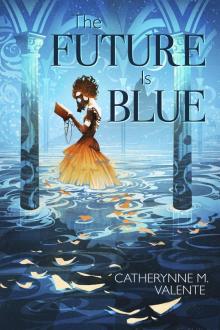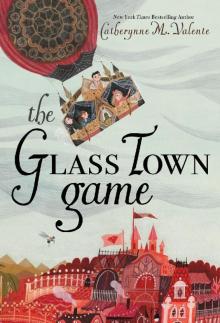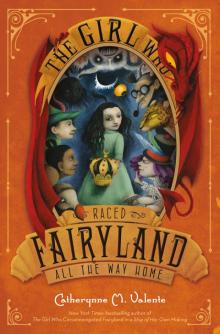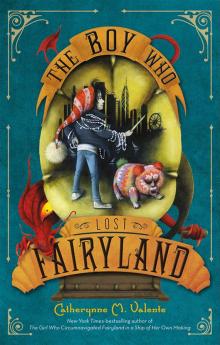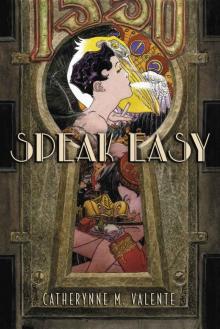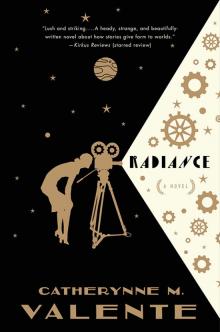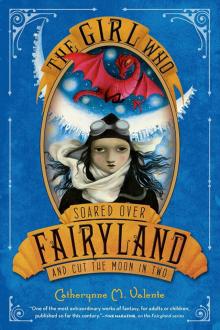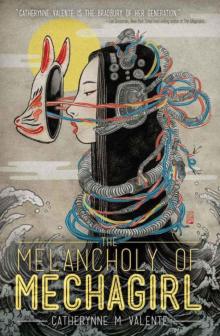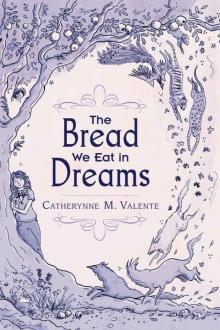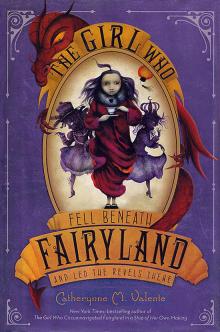


The Annotated Little Women
Louisa May Alcott
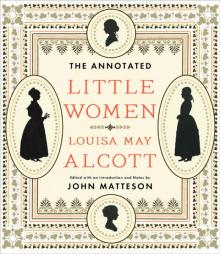
Louisa May Alcott as painted by G. P. A. Healy, two years after Little Women. (Louisa May Alcott Memorial Association; photograph by James E. Coutré)
TO ALL MY DEAR FRIENDS, PAST AND PRESENT,
WHO HAVE GIVEN THEIR TIME, TREASURE,
AND LOVE TO ORCHARD HOUSE
Contents
Introduction: Little Pilgrims
“We Really Lived Most of It”: A Biographical Note
LITTLE WOMEN
Preface
PART FIRST
I.
Playing Pilgrims
II.
A Merry Christmas
III.
The Laurence Boy
IV.
Burdens
V.
Being Neighborly
VI.
Beth Fnds the Palace Beautiful
VII.
Amy’s Valley of Humiliation
VIII.
Jo Meets Apollyon
IX.
Meg Goes to Vanity Fair
X.
The P. C. and P. O.
XI.
Experiments
XII.
Camp Laurence
XIII.
Castles in the Air
XIV.
Secrets
XV.
A Telegram
XVI.
Letters
XVII.
Little Faithful
XVIII.
Dark Days
XIX.
Amy’s Will
XX.
Confidential
XXI.
Laurie Makes Mischief, and Jo Makes Peace
XXII.
Pleasant Meadows
XXIII.
Aunt March Settles the Question
PART SECOND
I.
Gossip
II.
The First Wedding
III.
Artistic Attempts
IV.
Literary Lessons
V.
Domestic Experiences
VI.
Calls
VII.
Consequences
VIII.
Our Foreign Correspondent
IX.
Tender Troubles
X.
Jo’s Journal
XI.
A Friend
XII.
Heartache
XIII.
Beth’s Secret
XIV.
New Impressions
XV.
On the Shelf
XVI.
Lazy Laurence
XVII.
The Valley of the Shadow
XVIII.
Learning to Forget
XIX.
All Alone
XX.
Surprises
XXI.
My Lord and Lady
XXII.
Daisy and Demi
XXIII.
Under the Umbrella
XXIV.
Harvest Time
An Alcott Chronology
References
Further Reading
Acknowledgments
To highlight the literary value of the production, the design of this poster for the 1933 RKO film of Little Women incorporated the first edition of the first half of the novel. (Photofest)
INTRODUCTION
Little Pilgrims
PREDATING Tom and Huck, Jim Hawkins and David Balfour, Dorothy and the Wizard, and only three years junior to Lewis Carroll’s Alice, the March sisters of Little Women stand virtually at the inception of modern children’s literature. First appearing in the autumn of 1868, Meg, Jo, Beth, and Amy were destined to bring forth countless literary offspring. From the novels of Frances Hodgson Burnett to Anne of Green Gables to The Sisterhood of the Traveling Pants, it is a rare book for young girls that owes no debt to Louisa May Alcott and especially the ur-heroine of young women’s literature, Jo March. For such a far-reaching legacy, the initial image of Alcott’s four fictional sisters, as they sit by the fire and Jo grumbles about her lack of Christmas presents, seems a modest and almost unpromising beginning.
It is far from unusual for a children’s classic to begin with scenes of deprivation. As a genre, the children’s novel teems with armies of orphans. From Twain’s Tom Sawyer and Baum’s Dorothy to Burnett’s Mary Lennox and Sara Crewe, from Rowling’s Potter to Snicket’s Baudelaires, youthful protagonists typically find parents in decidedly short supply. Those juvenile heroes fortunate enough to have both parents intact invariably battle a host of other extraordinary ills, from gangs of bloodthirsty pirates to the influence of evil, disembodied brains. In such company, the problems that initially confront Meg, Jo, Beth, and Amy March in Little Women—an absent but not irretrievably lost father, an assortment of inner character flaws, and a deficiency of packages on Christmas morning—may seem comparatively mundane. Also conspicuously absent from Little Women is any character who comes close to a cosmic embodiment of All Things Evil. The four sisters have no Injun Joe with whom to contend, no Wicked Witch, no IT, no Lord Voldemort. The personal villains in the book never descend to any lower depths than Amy’s occasionally jealous schoolmates or the profit-maximizing editor who counsels Jo to add more blood and thunder to her magazine fiction.
Yet, despite these evident handicaps in the misery sweepstakes, Little Women has survived and flourished since its two parts were first published in 1868 and 1869. It has done so for a multitude of reasons, and many of them have to do with the very features that its fellow classics possess but which Little Women so conspicuously lacks. Little Women retains its importance in part because it recognizes that many of our most potent enemies lie within us and that life is far more likely to call on us to vanquish our vanity, selfishness, or ill temper than to battle actual evil wizards and slay physical dragons. The book succeeds as well because it reveals the value of the family. It does so not by depicting the horrors that ensue when a family has been shattered, but rather by celebrating the blessings that occur when family members surmount their differences and learn to love and support one another. Little Women also distinguishes itself from many of the later classic fictional treatments of American adolescents in that its view of the transition to adulthood is largely optimistic. Finding that the restraints and corruptions of “sivilized” society are too much for him, Huck Finn lights out to the territory. Salinger’s Holden Caulfield ends his narrative in a mental institution. Granted, there are moments when Little Women becomes more about the dread of growing up than about the act of growing up itself, and, of course, illness and death prevent Beth March from ever achieving a fully adult existence. Yet the stories of the three surviving sisters end in fulfillment of various kinds. Each has found the position and, more importantly, the work that will lead her to a life well lived. Indeed, even the demise of Beth can be seen not as a succumbing to death, but as a transcendent triumph over it. Because of the quiet courage and grace with which she faces the end, her passing feels less like a defeat than an apotheosis.
Two aspects of the happy ending of Little Women can never be emphasized enough. The first is Alcott’s insistence that all young women’s stories need not end the same. Through the diverse destinies of Meg, Jo, and Amy, Alcott stoutly asserts that there are a variety of happy endings toward which a growing girl might aspire. In contrast to Meg, who finds contentment as a wife and mother, Jo discovers the best part of herself by founding the progressive school Plumfield. Amy, happily allied with Laurie, pursues a life enlivened by art and philanthropy. Indeed, Alcott would have scattered her happy endings across an even wider range of outcomes if she had had her wish. Having conceived for Jo a rewarding life as a literary spinster, s
he relented only when her publisher, Roberts Brothers, persuaded her that marrying Jo off was the only commercially viable choice.
The second point is that not one of the four March sisters finds happiness by getting what she initially wanted. Near the midpoint of Part First, in a chapter called “Castles in the Air,” each of the girls lays out the future of her dreams. Meg, the materialist, covets “a lovely house, full of all sorts of luxurious things; nice food, pretty clothes, handsome furniture, pleasant people, and heaps of money.” Bookworm Jo aspires to “a stable full of Arabian steeds, rooms piled with books,” and a magic inkstand to bless her writings with literary fame. Beth modestly asks only “to stay at home safe with father and mother” and that “we all may keep well, and be together.” Amy, the budding aesthete, wants to “go to Rome, and do fine pictures, and be the best artist in the whole world.” At the novel’s end, not one of the girls’ wishes is fulfilled. Even Beth’s poignantly humble prayer for health and togetherness is cruelly denied. If happiness means nothing more than getting what one wants, the world of Little Women seems less one of dreams come true than one of thwarted youthful desires. But Alcott had a more mature idea of happiness. The March girls do not cry because their childish fantasies have been denied. Instead, they acquire the wisdom to accept fate when necessary and the courage to build less selfish dreams when possible. They find happiness not in narrow self-gratification, but in self-improvement and service to others.
Not only do the March sisters learn to be realists, but the landscape in which they live and grow is, unlike that of a multitude of children’s classics, uncompromisingly real. Although Jo and her sisters would gladly escape from their poverty and their anxiousness over the fate of their father, Alcott conjures no Oz, no Neverland, no Narnia for them to flee to. One of the greatest strengths of Little Women is that it is not a story about running away. Many books that worthily bear the mantle of “children’s classic”—Huckleberry Finn and Peter Pan spring readily to mind—are founded on fantasies of escape and even the possibility of eternal childhood. The marvelous boys at the center of those books will take a stand if they have to, and they have lessons aplenty to teach about the nature of courage. Still, their more frequent preference is for flight—away from responsibility and unpleasantness, even away from mortality itself. We love them, at least in part, for the genius and even the miraculous quality of their evasions. But, whereas many of her successors in children’s fiction would offer to solve their heroes’ problems by having them escape into a realm of magic and fantasy, Alcott preserves a firm barrier between imagination and fact. We love the March sisters because they stand their ground. When the March sisters do attempt to escape, as they do when they stage their plays, read their books, play their music, or simply drift off into pipe dreams of the future, they remain quite clear as to what’s real and what isn’t. Still, imagined reality plays an extremely prominent role in Little Women, and a key to understanding the progress of the March sisters from childhood to adulthood lies in an appreciation of how the characters’ own engagement with literary fiction informs their mental and emotional growth. To a very large extent, the March sisters are who they are because of what they read.
One is hard-pressed to think of a work of children’s fiction that contains a greater range and quantity of literary allusions than Little Women. To fully appreciate the literary context into which Alcott inserts the March family, one would require a knowledge of at least five dozen authors to whom Alcott either alludes or openly refers, as well as a relatively powerful command of the King James Bible. Other protagonists in classic novels for and about children often exist in a world disconnected not only from literature, but even from literacy. The March sisters, and Jo in particular, stand at the far opposite end of the spectrum. The girls’ homespun stage plays strive to emulate Shakespeare, and their domestic newspaper takes its cues from Dickens. Meg reads Sir Walter Scott, Jo paraphrases Harriet Beecher Stowe, Beth quotes Isaac Watts, Amy fumbles with Greek mythology, and, of course, Alcott herself persistently analogizes the sisters’ moral struggles to the more grandiose adventures of Bunyan’s pilgrim. Apart from Little Women’s ties to Bunyan, of which more will be said later, the book’s literary allusions, taken individually, seem essentially random; there appears to be no particular reason for Meg to be reading Ivanhoe or for art-loving Amy, on her European tour, to take time away from her beloved cathedrals and galleries to visit Goethe’s house or Schiller’s statue. Taken together, however, the dense literary allusions of Little Women add up to something important. We can start with the very fact that the March girls perceive themselves in a world shaped by stories. Stories—at least those that Alcott cites in her novel—have a purpose; they possess a logic that leads toward a goal. Living in a world rich in narratives, one begins to think of one’s existence as a kind of tale, replete with themes, reversals of fortune, and ultimate objectives, patiently striven toward. The fact that the Marches are immersed in narrative adds a substance to their lives that is not only intellectual but also moral. To live meaningfully, they, too, must have stories, of which they are their own authors, daily creating their self-fulfilling, self-affirming narratives.
Alcott’s infusion of literary references into her work also says something about her own ambition. Even at the outset of writing Little Women, when she presumed that her novel would be of no great interest to anyone, Alcott sensed that a novel deserved to be taken no less seriously because it happened to be written for younger readers. By consciously alluding to a wide variety of literary traditions, Alcott was situating her novel within those traditions and making a bold claim for its relevancy as a work of literary art. Generations before T. S. Eliot set forth the proposition in “Tradition and the Individual Talent,” Alcott understood that writing gains and creates significance through its relation to writings of the past. Through her reading, she was acquainted with the minds of western Europe. Through her personal associations, she knew Emerson, Thoreau, Hawthorne, and the other leading minds of Massachusetts, which then formed a large part of the mind of America. A great compendium of thought, then, is present in Little Women, and it ventures well beyond the works and writers Alcott could expect her youthful audience to know. Instead of consenting simply to meet her readers where they were, Alcott perceived her work as a stepping-stone toward greater heights. The child who reads Little Women may well become curious to find out what those authors whom Jo admires were up to. Little Women is a wonder of its kind. The vistas onto which it opens are more wondrous still.
Although Little Women was published in two parts, Alcott actually wrote it in three. Her motivations as an author were different as she wrote each one, and understanding her changing intentions is a vital key to divining the subtle shifts in meaning in the novel as a whole. As she wrote her first twelve chapters, Alcott had no expectation that the book would be a success. To the contrary, she held out scant hopes for her manuscript, which she was writing more to oblige her editor, Thomas Niles, than with any hope of pleasing a broader audience. Indeed, Alcott claimed later to have drafted these first dozen chapters merely to prove to Niles that she was not capable of writing a book for girls. If we take Alcott at her word, in these chapters she was least concerned with what the reading public would think of her work. Half expecting that the manuscript would never go farther than her editor’s desk, she presumably wrote without feeling greatly obliged to make herself pleasing to anyone.1
The second phase of the book, comprising the remainder of the chapters in the published Part First, were written with changed expectations. By now Niles had shown the first twelve chapters to his niece, who had found them captivating. Niles urged Alcott forward. Sparked by his enthusiasm, she responded with a torrent of chapters. With “a head full of pain from overwork,” she completed Part First in a matter of weeks. The book was now plainly a profit-making venture—of high quality, to be sure, but more calculated than before to appeal to a commercial audience. When Alcott wrote Part Second of Litt
le Women, the portion published in 1869 and sometimes known as “Good Wives,” her motivations were at their most complex. On the one hand, the public’s eager reception of Part First had filled Alcott with unprecedented confidence. On November 1, the day she started the sequel, she wrote, “A little success is so inspiring that I now find my ‘Marches’ sober, nice people, and as I can launch into the future, my fancy has more play.” The virtual certainty that readers would line up to buy the concluding half of Little Women helped her feel she could create more boldly. At the same time, however, knowing that she had a public to please weighed irksomely upon her.
The effects of Alcott’s changing intentions for the book that became Little Women are observable in the novel itself. The first dozen chapters, which, surprisingly, Alcott initially considered “dull,” contain some of the liveliest and most memorable scenes in the entire novel. It is here that the girls take to their homemade stage in “The Witch’s Curse”; that Jo’s angry neglect causes Amy to fall through the ice; that Meg’s fancy curls, the victims of an ineptly wielded iron, go up in smoke; and that Beth conquers both her shyness and the heart of old Mr. Laurence. In these chapters, writing with no great anticipation of success, Alcott wrote with little affectation. The tale is told with a simplicity that is charmingly mimetic of the innocence of the March sisters themselves—a naïveté that will slowly evaporate as the girls gain more knowledge of the world. These chapters feel as if Alcott drafted them at least in part for her own amusement, freely weaving memories of her youth with the brightest strands of her imagination and infusing all with an ethical understanding that comes to people looking back on their early years.

